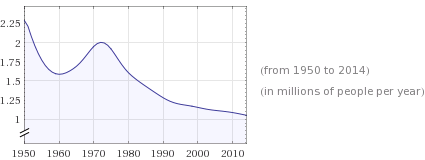How Japan's Female Generation X Achieved Lower Birth Rates from 1985 - 2015

A Women's Movement in Japan
Having read the body of recorded research from 1970 - 2015 and having interviewed several additional Japanese women of Generation X in the mid-to-late 1980s myself, I have understood the reasons for purposely delaying marriage and pregnancy among these women. They wanted careers, respect, and equitable range of pay, just as did the Japanese men. The women were parting from tradition en masse.
The news of the movement among Japanese Gen X women was everywhere in my area in 1986, even in our Martial Arts magazines, newsletters, and studio announcements - or perhaps especially in all those, since so many Japanese arts have been popular here in Central Ohio. The newspapers covered the movement briefly.
We non-Japanese rushed to Japanese friends and colleagues to find out what was happening.
The gist of the movement is that women were refusing marriage and offspring with the result of declining birth rates. Some have thought that this is especially true of birthrates for male babies, buit this does not seem to be the case.
An added development to the movement is reflected in headlines that state that Japanese people no longer want to have sex. It is difficult to know whether this is true.
The Japanese government instituted two waves of an Angel Program that encouraged women to (marry and) have children, but the the birth rate is still declining.
Birth Rate in Japan from 1950 through 2014

By the end of 2014, Japan supported 127,300,000 persons and was expected to rank Number 10 in nations of the largest populations by the end of 2015.
Will Japan Become Extinct?
By the end of 2014, Japan was losing 0.095% of its population every year, after considering births, deaths, and net migration into the country. Suggestions have been forthcoming that the population nationally will decline to 97,000,000 by the year 2050. Alarmists state that the Japanese people will become extinct.
At the same time, the national population increased from around 107,000,000 in 1972 to over 127,000,000. These 20,000,000 in difference are 1) babies born to older women and 2) long-lived senior citizens, a cohort that is still increasing in the 2010s.
The number of births in 2012 decreased as the number of women in their 20s and 30s declined, a health ministry official said. However, births increased among women in their 30s and 40s.
— Japan Times; June 6, 2013Japanese Births by Year in a New Declining Trend Since 2009
Year
| Number of Births
| Decline
|
|---|---|---|
2014
| 1,001,000
| - 29,000
|
2013
| 1,030,000
| - 7,101
|
2012
| 1,037,101
| - 23,705
|
2011
| 1,050,806
| - 32,194
|
2010
| 1,083,000
| - 4,000
|
2009
| 1,087,000
| - 21,000
|
2008
| 1,108,000
| No decline 2007 - 2008
|
Japanese Ministry of Statistics, data available 1899 to 2014.
Looking at the charts above and below, we see that the number of births yearly declined from 2009 - 2014, but the Japanese national population increased. The increase is a result of senior citizens living longer. The population is top-heavy with seniors.
Japanese Population Statistics
National Population Size
| Population Density, Metric
| Population Density, English
| Net Migration Per Capita
|
|---|---|---|---|
127,300,000 in 2014
| 336 persons per square kilometer
| 872 persons per square mile
| +5.488 x 10 to -4 power person per person annually
|
107,000,000 in 1972
| 309 persons per square kilometer
| 800 persons per square mile
| +8.429 x 10 to -4 power person per person annually
|
Source: Japanese Ministry of Statistics. The year 1972 showed a peak in birth rate, floowed by a long decline and a 2014 peak birth rate.
A Shortage of Males in Japan?
The women of Japan worked and demanded equal earnings with men and equal opportunity for advancement in responsible jobs. They had decided to refuse marriage and children until they received equality in pay and position in the workforce. This may not have been an organized movement, but many women decided the same thing all at once.
It is different, then, in 2015, to read articles by young men and women in other countries that advocate for Japanese women to both enter the workplace and also to have children and accept the traditional roles of Japanese wives. The younger voices call upon Japanese business to open on-site daycare centers. However, the insurance coverage alone for such center is so expensive that the huge Nationwide Enterprise in Central Ohio felt it was not cost effective. Moreover, Asian countries often hire RNs for daycare, rather than minimum-wage sitters, so the expense is exponential and prohibitive.
Young bloggers in America are calling for Japanese business to eliminate the long-held tradition of male employees (and female now, whom the government hopes have babies to tend) accompanying the boss to dinner and drinks for a couple of hours every evening and then returning to the job for 2-3 hours more work. From outside Japan, it may be easy to say, "Do away with it." From inside Japan, it may be impossible. Mothers with young children cannot participate in this tradition and thus, cannot gain recognition and promotion on many jobs.
Misplaced Good Intentions
Today's younger bloggers may not be aware that the decrease in birth rate in Japan from 1985 - 2015 has been purposeful - plan by the nation's women as a protest to what they have seen as Japanese female second-class citizenship. At the same time, the birth rate of the nation began to decline around 1972 and continued to descend to 2014. Next, annual deaths began to outnumber births. In 2014, the birth rate was 1.4 children per woman, but the government wants to raise it to over 2.0.
The female Generation X purposeful birth rate decline happened in the middle of the overall decline from 1972 - 2014, so Gen X were not the only women involved. It is safe to say that some Baby Boomers and some Generation Y women were participants. With fewer females born yearly as a result during the declining-rate years, still fewer births annually were had going forward. At the same time, the number of males and females born are nearly the same, but some people see a dearth of males.
During each decade, voices arise that demand that women marry and have children. In the 2010s, many of those voices are other women.
Does Japan Need Solutions at the Cost of It's Women?
The decrease-marriage-and-birth plan worked, whether it was organized or not.
In the 2010s, though, "solutions" are seen by the Japanese Government and by young people who do not live in Japan. During each decade, voices arise that demand that women marry and have children - in Japanese and in America as well. Why? Many of those voices are other women - without husband or children - and I wonder why. It is confusing.
One voice I hear is Jonathan Soble's in an article called To Rescue Economy, Japan Turns to Supermom in The New York Times on January 1, 2015.
Mr. Soble's opinion is that Japan needs to be fixed and that the stay-at-home moms are the fixers - whether they would like to work outside the home or not, it seems.
Many women dropped out of the workplace, because of inequality. They should not be forced back by the government, their families, or foreign advice to work in inequality and then to return home to another full-time job with added Japanese traditional tasks.
Does Japan need fixing? Tell us what you think in Comments.
Important References
- The Economist. Japanese Women and Work: Holding back half the nation. March 29, 2013. http://www.economist.com/news/briefing/21599763-womens-lowly-status-japanese-workplace-has-barely-improved-decades-and-country Retrieved April 28, 2015.
- Swanson, Ana. The Washington Post. Japan’s birth rate problem is way worse than anyone imagined. January 7, 2015. http://www.washingtonpost.com/blogs/wonkblog/wp/2015/01/07/japans-birth-rate-problem-is-way-worse-than-anyone-imagined/ Retrieved April 29, 2015.
- T.B.; Tokyo. The Economist. Why the Japanese are having so few babies. July 23, 2014. http://www.economist.com/blogs/economist-explains/2014/07/economist-explains-16 Retrieved April 28, 2015.
In the 1980s, many young Japanese women made the conscious move to abstain from marriage and childrearing in order to demand equality in the workplace. The plan worked, producing a shortage of males. Divorce rates have also increased somewhat, but have not yet reached the level of American divorce.
More About The Plight of Japan and Asian Women
- Major Causes Of Divorce: Japan Gaining on USA and Canada 2005 - 2020
Divorce statistics are changing worldwide. The rate of divorce in America is decreasing rather quickly, but that of Japan has continued to increase gradually since 1988. - Asian Women's Sorrows - The Joy Luck Club
In San Francisco's Chinatown -- The stories of this book cluster around first Chinese American Jing-mei (June) Woo's journey of discovery to China to meet her half-sisters left by a roadside: the twins Chwun Yu and Chwun... - In China, No One Wants a 27-Year-Old Sheng Nu - Female Suicide Rate Increases the Gender Gap
“Marrying a woman is like buying a horse: I can ride you and beat you whenever I like,” -- Xu Rong, head of the Beijing’s Suicide Prevention Project

Oprah Winfrey said in 2013 that “for racism to end, racists must die...People are terrorized because of the color of their skin, because of the color of their black skin. There are still generations of people, older people, who were born and bred and marinated in it – in that prejudice and racism – and they just have to die.” (Reference: http://www.msnbc.com/politicsnation/oprah-old-racists-have-die-progress) If true, is the same true of those who are prejudiced against women or others?

© 2015 Patty Inglish MS






